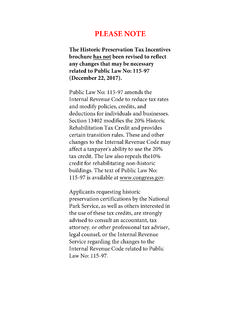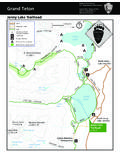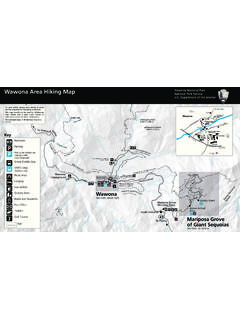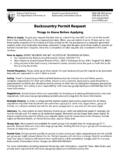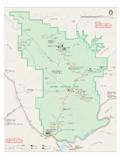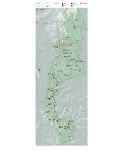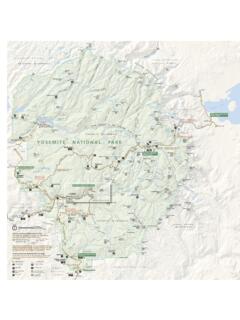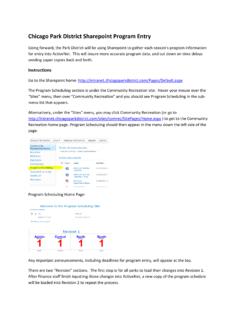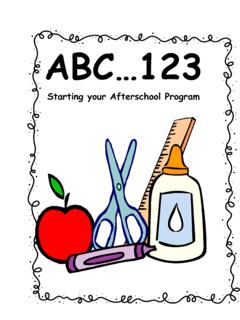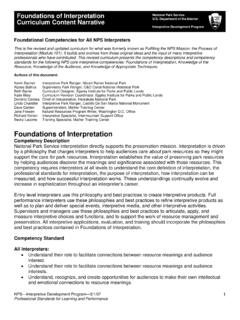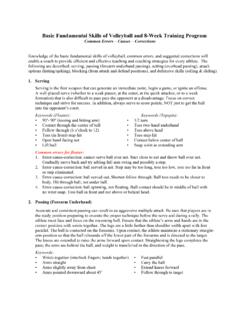Transcription of A Crash Course in Interpretation - National Park Service
1 A Crash Course in Interpretation By Dave Smaldone 9/03 2 The Roots of Interpretation Interpretation as a profession is of recent origin, although its roots were planted thousands of years ago. Storytellers, bards, keepers of wisdom these people had many names. But the common thread linking them was that prior to the written word, these were the people most responsible for passing down knowledge from generation to generation. In recent times, the disciplines of psychology, sociology, marketing and advertising have all contributed to the theories and techniques on which Interpretation is based. Today, interpreters work in a variety of settings parks, museums, zoos, adventure tour guiding companies, and cruise ships to name but a few. Regardless of where they work, interpreters share a common goal connecting visitors with the resource. While often most commonly thought of when discussing Interpretation , the United States National park Service (NPS) is only one organization that employs and helps advance the profession of Interpretation .
2 The National Association for Interpretation (NAI) was formed in 1988 (but actually had its beginnings in the 1950s), and is the leading organization dedicated to advancing the profession of Interpretation . Both the NAI and the NPS have recently begun standardizing certain aspects in the field of Interpretation , and have begun certifying interpreters who demonstrate mastery of various realms in Interpretation . While the NPS certification program is only available to NPS employees, anyone in the field of Interpretation can work to become certified by the NAI. What is Interpretation ? The modern profession of Interpretation began with the work of Enos Mills and Freeman Tilden. Enos Mills (1870-1932) was a well-known naturalist in Rocky Mountain National park , a keen observer of the natural world, and an out-spoken advocate for nature and nature guiding. He not only guided people in the park , he also helped train other nature guides, and wrote what is perhaps the first book about nature guiding, Adventures of a Nature Guide and Essays in Interpretation .
3 Freeman Tilden was a writer and playwright who was asked by the NPS to study Interpretation and write about it. Out of his travels and research came the landmark book, Interpreting Our Heritage in 1957. This is still a widely read book for the profession, as it lays out six principles of Interpretation and does an excellent job of describing them in detail (see Appendix I for a list of Tilden s Principles). Over the years, numerous other scholars and practitioners have added to this early foundation. Some of the more prominent ones include William Lewis and Dr. Sam Ham. While Interpretation has been defined in a number of ways, as you can see, the definitions all share some common ideas: Freeman Tilden: An educational activity which aims to reveal meanings and relationships through the use of original objects, by firsthand experience, and by illustrative media, rather then simply to communicate factual information.
4 3 Dr. Sam Ham: Interpretation is an approach to involves translating the technical language of a natural science or related field into terms and ideas that people who aren t scientists can readily understand. NAI: Interpretation is a communication process that forges emotional and intellectual connections between the interests of the audience and the meanings inherent in the resource. NPS: Interpretation facilitates a connection between the interests of the visitor and the meanings of the resource. Expanding on this, the NPS said that Interpretation is: 1) successful as a catalyst in creating an opportunity for the audience to form their own intellectual and emotional connections with the meanings/significance inherent in the resource; and 2) appropriate for the audience, and provides clear focus for their connection with the resources by demonstrating the cohesive development of a relevant idea or ideas, rather than relying primarily on a recital of a chronological narrative or series of facts.
5 Key commonalities running through the above definitions are that Interpretation : 1) is a process, 2) serves to connect the visitor to something (the resource) on both an emotional and intellectual level, and 3) is more than mere information ( , involves more than just reciting facts, dates, lists, etc.). Interpreters also deal with a special type of audience, and knowing a little bit about your audience will make you a better interpreter. Generally, people coming to interpretive programs are doing so in their leisure time, in other words for fun. In the academic sense, they are intrinsically motivated (internally), rather than extrinsically motivated (externally). Contrast this audience with students in a class who are motivated by grades, employees attending a training seminar who are motivated by higher pay or further certification, and so on. This is a critical in helping you understand how to connect with your audience, and in understanding the four qualities of Interpretation to be discussed below.
6 This type of audience that attends interpretive program is also referred to as a non-captive audience. They are there because they want to be, and therefore are free to leave whenever they want. Again, the differences between this type of audience and a captive audience are important to understand non-captive audiences expect an informal and non-academic style of interaction. If a non-captive audience is bored, they will either leave, or simply tune you out. So just realizing this difference in audience motivations should help you understand how Interpretation is different than other types of communication. Finally, good interpreters are also able to portray multiple points of view, rather than simply skewing the story to be one-sided. You should be able to acknowledge and discuss different sides to the stories you share, and doing so shows respect for the diversity of opinions and beliefs that are inherent in your audiences.
7 4 Differences between Interpretation & Environmental Education As you have may already guessed, Interpretation is not the same as environmental education. As noted, Interpretation deals with non-captive audiences (voluntary, leisure-based, internally motivated), whereas environmental educators often deals with students who are a captive audience (externally motivated usually by grades). These students are usually participating as part of a larger school-wide program. Environmental education is also (usually) curriculum-based with corresponding educational goals and specific learning objectives that are tied into a state s learning standards. Well-known and widely used environmental education curricula include Project WILD, Project WET, and Project Learning Tree. Interpretation also deals with an audience or group of visitors for a short time, usually only an hour or two they come to your program and then they leave, and you might never see them again (depending on where you work).
8 On the other hand, environmental educators often see groups of students a number of times over the Course of a day, a week, or even a school year, and thus can plan sequentially-based learning activities that can be built upon over a longer time period. Finally, environmental education either deals with the natural environment specifically, or it attempts to incorporate environmental issues and themes into other subjects (history, math, etc.). Interpretation can take place anywhere (not just in parks), and can deal with any type of resource or topic. However, similarities exist as well. Good teachers and educators, regardless of where or what they are teaching, use interpretive techniques in the classroom in order to help their students learn. Teachers who engage students, who make a lesson come alive by relating the topic to the students, who do more than recite facts these teachers are also interpreting.
9 And often with a little extra planning or modifying, interpretive programs can be made into environmental education activities that will fit state-based curriculum objectives. However, do not confuse these two types of activities or professions while all teachers should use interpretive techniques, Interpretation is quite different than environmental education. Qualities of Interpretation Dr. Sam Ham has described four general qualities that will help make your interpretive programs successful. While interpreters should strive to use these in all their programs, sometimes certain programs or activities lend themselves to focus more on just a few, rather than all four. Interpretation is Enjoyable As described above, the audiences who participate in interpretive activities are voluntary, and can and do leave if they are bored or not interested in the program. There are many things you can do in order to make the information you are talking about more interesting and enjoyable for the audience.
10 A simple technique is just to smile more! Other techniques include using active verbs, using exaggeration to make a point (size, time scale, etc.), engaging people s senses, or focusing on a specific individual (who could be real or fictitious) in order to tell a story or make a point. 5 Interpretation is Relevant One of the crucial aspects of Interpretation is being relevant being able to relate what you re saying to the visitor in a way they can actually understand it. Dr. Ham noted that relevance has two main characteristics: 1) being meaningful the info you present must have a context, so the audience can understand it in relation to something they already know (this fosters an intellectual connection); and 2) being personal you must connect the info to something the audience cares about, not just knows about (this fosters an emotional connection). There are numerous interpretive techniques that can be used to make the information you are giving more meaningful, and many are things you already know about and probably use everyday.
